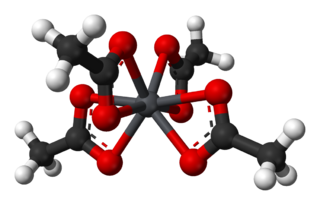This page is based on this
Wikipedia article Text is available under the
CC BY-SA 4.0 license; additional terms may apply.
Images, videos and audio are available under their respective licenses.

In chemistry, an ester is a chemical compound derived from an acid in which at least one –OH (hydroxyl) group is replaced by an –O–alkyl (alkoxy) group. Usually, esters are derived from a carboxylic acid and an alcohol. Glycerides, which are fatty acid esters of glycerol, are important esters in biology, being one of the main classes of lipids, and making up the bulk of animal fats and vegetable oils. Esters with low molecular weight are commonly used as fragrances and found in essential oils and pheromones. Phosphoesters form the backbone of DNA molecules. Nitrate esters, such as nitroglycerin, are known for their explosive properties, while polyesters are important plastics, with monomers linked by ester moieties. Esters usually have a sweet smell and are considered high-quality solvents for a broad array of plastics, plasticizers, resins, and lacquers. They are also one of the largest classes of synthetic lubricants on the commercial market.

An acetate is a salt formed by the combination of acetic acid with an alkaline, earthy, metallic or nonmetallic and other base. "Acetate" also describes the conjugate base or ion typically found in aqueous solution and written with the chemical formula C
2H
3O−
2. The neutral molecules formed by the combination of the acetate ion and a positive ion are also commonly called "acetates". The simplest of these is hydrogen acetate with corresponding salts, esters, and the polyatomic anion CH
3CO−
2, or CH
3COO−
.
In organic chemistry, butyl is a four-carbon alkyl radical or substituent group with general chemical formula −C4H9, derived from either of the two isomers of butane.
A paint thinner is a solvent used to thin oil-based paints or clean up after their use. Commercially, solvents labeled "Paint Thinner" are usually mineral spirits having a flash point at about 40 °C (104 °F), the same as some popular brands of charcoal starter.

Ethyl acetate is the organic compound with the formula CH
3–COO–CH
2–CH
3, simplified to C
4H
8O
2. This colorless liquid has a characteristic sweet smell and is used in glues, nail polish removers, decaffeinating tea and coffee. Ethyl acetate is the ester of ethanol and acetic acid; it is manufactured on a large scale for use as a solvent. The combined annual production in 1985 of Japan, North America, and Europe was about 400,000 tonnes. In 2004, an estimated 1.3 million tonnes were produced worldwide.

2-Butoxyethanol is an organic compound with the chemical formula BuOC2H4OH (Bu = CH3CH2CH2CH2). This colorless liquid has a sweet, ether-like odor, as it derives from the family of glycol ethers, and is a butyl ether of ethylene glycol. As a relatively nonvolatile, inexpensive solvent of low toxicity, it is used in many domestic and industrial products because of its properties as a surfactant.
Glycol ethers are a group of solvents based on alkyl ethers of ethylene glycol or propylene glycol commonly used in paints and cleaners. These solvents typically have a higher boiling point, together with the favorable solvent properties of lower-molecular weight ethers and alcohols. The word "Cellosolve" was registered in 1924 as a United States trademark by Carbide & Carbon Chemicals Corp. for "Solvents for Gums, Resins, Cellulose Esters, and the Like",; the first one was ethyl cellosolve, with the name now generic for glycol ethers.

n-Butanol or n-butyl alcohol or normal butanol is a primary alcohol with a 4-carbon structure and the chemical formula C4H9OH. Its isomers include isobutanol, 2-butanol, and tert-butanol. Butanol is one of the group of "fusel alcohols" (from the German for "bad liquor"), which have more than two carbon atoms and have significant solubility in water.

Lead(IV) acetate or lead tetraacetate is a chemical compound with chemical formula Pb(C2H3O2)4. It is a colorless solid that is soluble in nonpolar organic solvents, indicative that it is not a salt. It is degraded by moisture and is typically stored with additional acetic acid. The compound is used in organic synthesis.
The molecular formula C6H12O2 (Molar mass: 116.15 g/mol) may refer to:

tert-Butyl formate, also known as formic acid tert-butylester and TBF, is a chemical compound with molecular formula C5H10O2. TBF is one of the possible daughter products of methyl tert-butyl ether biodegradation.
The molecular formula C7H14O2 may refer to:

2-Butoxyethanol acetate is a chemical commonly used as a solvent; it is the acetate of 2-butoxyethanol.

ICI-164384, also known as N-n-butyl-N-methyl-11-(3,17β-dihydroxyestra-1,3,5 -trien-7α-yl)undecanamide, is a steroidal antiestrogen and a synthetic derivative of estradiol which is closely related to fulvestrant and was never marketed. It is a silent antagonist of the estrogen receptor (ER) with no intrinsic estrogenic activity and hence is a pure antiestrogen, unlike selective estrogen receptor modulators (SERMs) like tamoxifen. The drug was under development by AstraZeneca for the treatment of breast cancer but was discontinued in favor of fulvestrant, which is very similar to ICI-164384 but is more potent in comparison.












